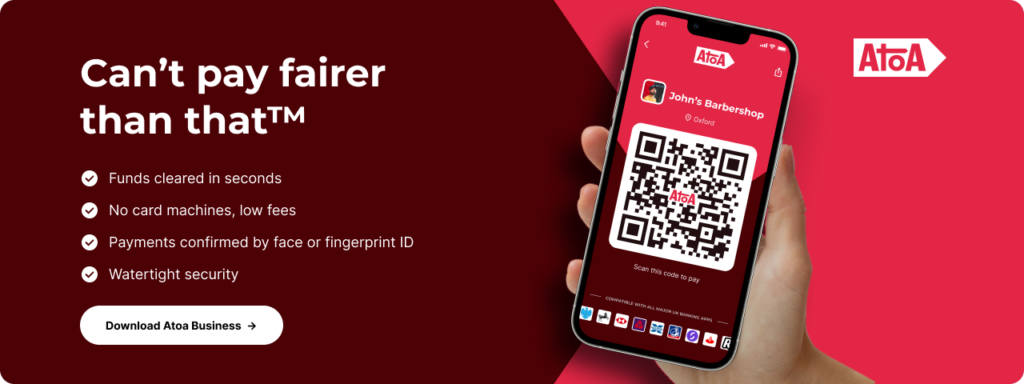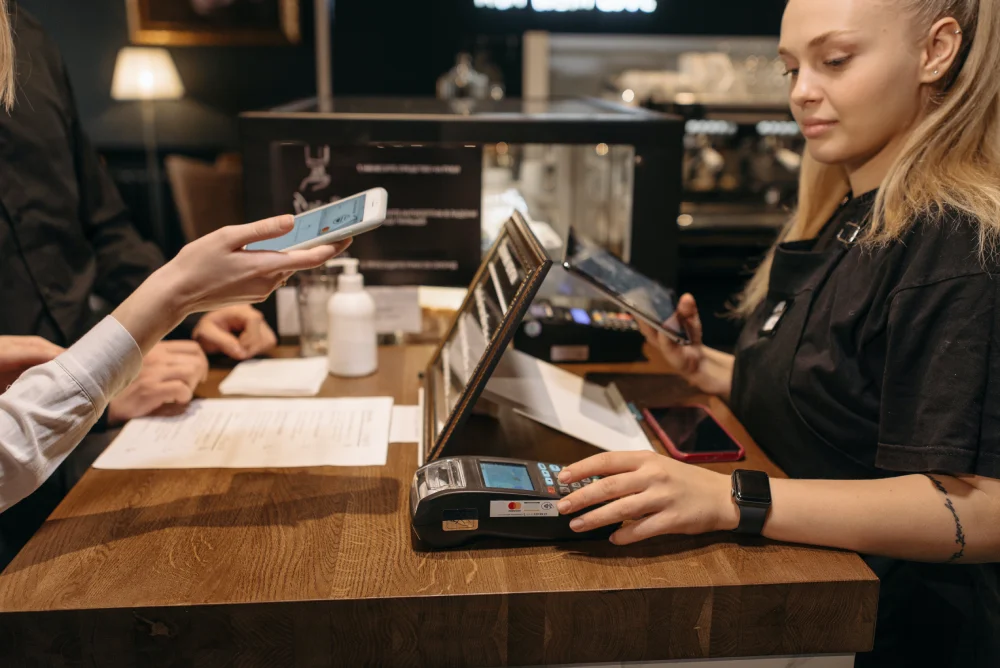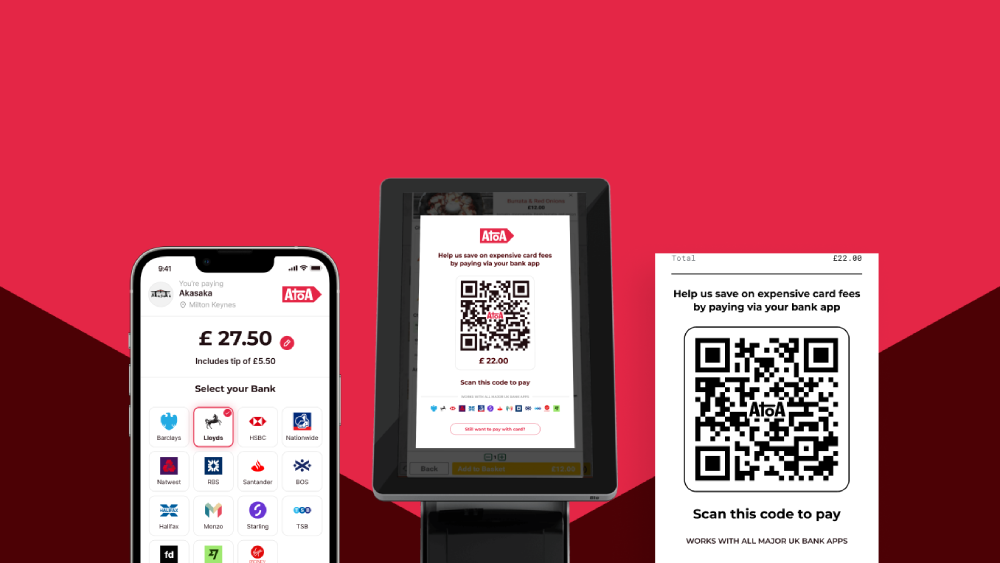Ready to get started?
Get paid faster and save up to 50% on fees with Pay by Bank.
What if the key to unlocking customer loyalty lies in how you accept payments? In a recent study by Nuapay, surveying over 2,000 UK consumers, found that 52% would choose account-to-account payments if given the option. These figures highlight a largely untapped opportunity for UK retailers to enhance their payment offerings. As a retailer, you face an important challenge: should you stick with traditional cash, use card payments, or embrace digital solutions? Remember, every method has its own set of advantages and disadvantages. Let’s explore the pros and cons of cash, cards, and digital payments to help you determine which option works best with your business goals.You might find an answer that not only benefits your business but also makes life a whole lot easier.
Cash
Cash payments are still a go-to for many, offering that instant, no-fuss transaction experience. While they keep things simple and private, there are also drawbacks to consider. Let’s explore the pros and cons of using cash in today’s economy.

Pros
No processing fees: Cash transactions do not incur any processing fees, unlike cards. This can lead to more savings, especially for smaller companies that struggle with high transaction costs.
Instant transactions: Cash provides immediate settlement. It allows you to access funds instantly.
Familiar for many customers: For some, cash is a preferrence due to its tangibility, making it an accessible option for a wide range of consumers.
Privacy and anonymity: Cash transactions offer a degree of privacy that electronic payments do not. Customers can make purchases without leaving a digital footprint.
Cons
Security risks: Cash is vulnerable to theft and loss. Unlike electronic payments, which can often be traced or reversed, lost or stolen cash is typically unrecoverable.
Impractical for large transactions: For high-value transactions, cash can be impractical. Many businesses set limits on cash transactions to avoid these issues, which can frustrate customers.
Incompatible with online sales: Cash transactions limit you to serve a broader audience, particularly in markets that prefer online transactions.
Card payments
Card payments are a cornerstone of modern commerce. But instead of just celebrating the benefits, let’s look at both sides of this payment method—the pros and the cons.
Pros
Convenience for customers: Be it shopping in-store or online, the convenience of cards helps speed up the checkout process, making it faster and often more efficient.
Potential sales through loyalty programs: Many cards come with loyalty programs that reward customers with cash back, points, or discounts. You can boost sales and encourage repeat business from customers eager to earn rewards.
Widely accepted: Cards are universally accepted in retail environments, both physical and online, making it a preferred payment method for many. For businesses, this means increased foot traffic and a broader customer base.
Cons
Transaction fees: You often have to give a large percentage fee on each sale, which can add up quickly, especially for small businesses operating on tight margins. These fees can cut into profits.
Risk of chargebacks: Chargebacks can be frustrating, resulting in lost revenue and additional fees. Frequent chargebacks may lead to higher costs or even the loss of the ability to accept card payments.
Reliance on electronic systems: System outages, glitches, or connectivity issues can disrupt payment processing, leading to checkout delays. If unprepared, you may face lost sales and dissatisfied customers.
Digital payments
Digital payments have made life easier. Yet, they have their own perks and pitfalls. Let’s find out what they are.

Pros
Instant transactions: One of the standout benefits is the speed. Unlike traditional payment methods, digital payments are completed within seconds. It offers convenience for customers and allows you to manage cash flow better.
Lower fees: Many digital payment platforms like Atoa offer lower transaction fees than cards. This means more of the customer’s payment goes directly to you, boosting your profit margins.
Enhanced security: Digital payments are loaded with smart security features like encryption and fraud detection to keep you and your customers safe. This added protection builds trust, ensuring everyone’s financial details are secure during online or in-store purchases.
Appeals to tech-savvy shoppers: Many now lean towards digital payment methods like mobile wallets and contactless cards. By offering these options, businesses can attract younger customers who value convenience and innovation.
Cons
Requires reliable internet: In areas with spotty or slow access, checkout delays can frustrate customers and lead to lost sales.
Hesitant to adopt new technology: Some customers might be hesitant to embrace new technology. If you focus only on digital options, you could miss out on these shoppers. Offering a mix of payment methods lets everyone feels welcome and comfortable
The current payment landscape in the UK retail industry
With the payment landscape constantly evolving, it’s clear that consumer preferences are shifting dramatically. A trend tracked by PWC revealed that digital wallets are set to capture a 21% share of the UK retail transaction volume by 2026, signalling a significant move towards cashless solutions.
In stark contrast, cash usage plummeted to just 14% of transaction volume in 2022, down from 40% in 2016. Meanwhile, debit card transactions are at an all time high, accounting for 50% of all transactions. With projections indicating that cash will represent a mere 7% of transaction volume by 2032, it’s essential for you as a retailer to understand these trends and adapt their payment strategies accordingly.
Financial implications for your business
Let’s dive into three key areas: cost analysis, the impact on cash flow, and investment in payment technology.

Cost analysis
Check out the transaction fees for each payment method. Credit card fees can be higher, which might cut into your profits if you run a smaller business. Digital payments usually have lower fees, but they may come with a monthly subscription or extra costs for advanced features.
Impact on cash flow
Instant payments with brands like Apple pay and Atoa can really boost your cash flow, keeping your retail operations running smoothly. With quick access to funds, daily tasks like restocking and paying suppliers, especially during busy seasons, becomes easier.
Investment in payment technology
When picking payment methods, consider the initial costs versus long-term savings. Investing in modern systems simplifies how you accept payments and improves customer experience—think faster checkouts.
Takeaway
When it comes to retail, picking the right payment method can make all the difference. Each option—cash, card, or digital—comes with its own set of pros and cons that affect everything from transaction speed to how happy your customers feel. By offering a mix of these payment methods, you can cater to diverse customer preferences and enhance their shopping experience. So, take a moment to assess what works best for your business.
FAQs about digital payments
What are the different types of digital payments?
Digital payment methods include mobile wallets, account-to-account (A2A) payments, peer-to-peer (P2P) apps, online payment gateways, and good old bank transfers. Each option has its perks, so it’s worth exploring what fits your needs best.
Which type of digital payment is right for me?
Choosing the right payment method really depends on your business needs. We recommend looking for options that are fast, fair, and secure to find the perfect fit for you.
Can I use my mobile wallet for in-store purchases?
Absolutely! Many retailers in the UK accept mobile wallet payments through contactless technology, allowing you to pay conveniently without cash or cards.
Can I try out a digital payment gateway before I decide to invest in it?
Yes, you can. If you’d like some help to get started, you can book a demo with our friendly team at Atoa, today!



